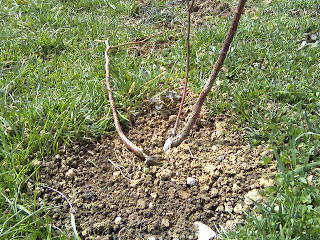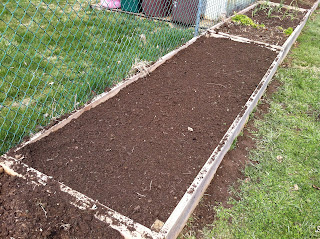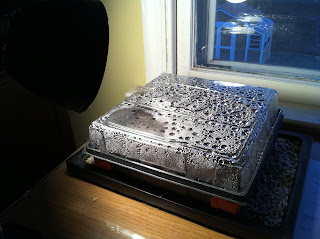But I'm not here to talk about tomatoes. I'm here to talk about sweet potatoes. Yesterday we got around to harvesting our first try at sweet potatoes. I read that the longer you keep them in the ground, the sweeter they get. I also read that you can keep them in the ground until one or two frosts. When you see the leaves starting to yellow, that's a sign to harvest them. When the leaves start to blacken (from frost), then you really need to pull them.
Anyway, it was a nice sunny Sunday, so we had at it. If you can see in the picture, some of the leaves are starting to turn black.
As you can see from the next picture, the vines really spread out from their original spot. When I planted them I had 3 rows of about 5 sprouts.
First we started by using a spade shovel and trying to scoop under where we thought they would be. We then had our first glimpse of sweet gold.
Heck, some of them even looked like carrots.
After harvesting them, I laid them out in the sun to start the curing process.
I am looking forward to preparing them and eating them. I'm not sure if I will plant sweet potatoes again next season. They took up a good deal of space in my beds, and I was expecting (hoping) for a larger yield. I harvested about 20lbs of sweet potatoes.
The red potatoes that I planted this season, gave me a larger yield and less time in the ground. So they will definitely be in my garden plan next season.
I'll let you know how they taste!
































